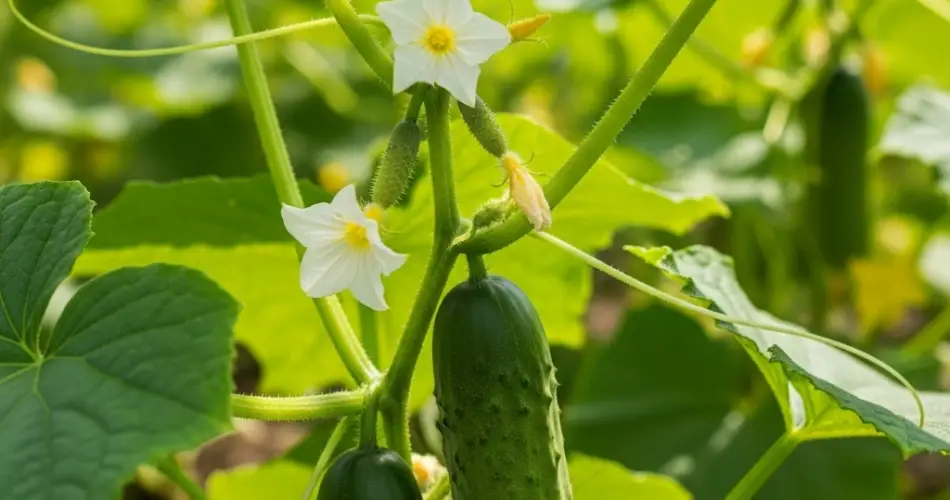Cucumbers are one of the most popular vegetables in home gardens and commercial farms alike. Their crisp texture and refreshing flavor make them a staple for fresh salads, pickling, and cooking. However, growing healthy, productive cucumber plants requires more than just planting seeds and watering regularly. One of the most critical steps in ensuring a strong start and a bountiful harvest is the first feeding of cucumbers.
This first feeding is often overlooked or delayed, but it can make all the difference between weak, slow-growing plants and vigorous, fruitful vines that fill your garden with crisp cucumbers. When applied correctly, this feeding stimulates rapid growth, boosts plant health, and sets the stage for abundant flowering and fruit development.
In this article, you will learn why the first feeding is so important for cucumbers, how to prepare a natural and effective fertilizer, and exactly how and when to apply it to get the best results.
Why the First Feeding Matters
Right after cucumbers have been transplanted or germinated from seed, their root systems are still developing and delicate. The initial weeks are a critical period for:
-
Root establishment and expansion
-
Building strong stems and leaves
-
Preparing for flowering and fruit set
Without proper nutrition during this stage, cucumber seedlings can become weak, leggy, or susceptible to disease. Even plants that appear to be “okay” may produce fewer flowers and fruit later on, leading to disappointing yields.
A well-timed first feeding provides the essential nutrients and natural growth stimulants that encourage roots to grow deeply and vigorously. This foundation ensures that plants can take full advantage of water and nutrients in the soil throughout the growing season.
What Makes a Good First Feeding for Cucumbers?
Cucumbers benefit from a balanced supply of nutrients, but at the seedling and early growth stages, certain elements are particularly important:
-
Nitrogen (N): Encourages leaf and stem growth, helping plants build strong structures.
-
Phosphorus (P): Supports root development and flower formation.
-
Potassium (K): Enhances fruit quality and overall plant resilience.
-
Trace minerals and natural hormones: Aid metabolism, stress resistance, and immune response.
Many synthetic fertilizers provide these nutrients, but a natural, homemade feeding solution can nourish your plants without harmful chemicals or risk of over-fertilization.
Preparing a Natural First Feeding Solution
Here is a simple recipe that uses natural ingredients readily available to most gardeners. It feeds your cucumbers gently but effectively during their critical early growth phase.
Ingredients:
-
1 liter of clean, room-temperature water (preferably rainwater or filtered)
-
1 teaspoon of liquid seaweed extract or aloe vera juice (rich in growth hormones and trace minerals)
-
1 tablespoon of well-rotted compost or compost tea (for beneficial microbes and nutrients)
-
1 teaspoon of molasses or honey (to feed soil microbes and energize plants)
-
Optional: 1 teaspoon of wood ash (for potassium and calcium)
Instructions:
-
Mix all ingredients thoroughly in a watering can or bucket.
-
Stir well to dissolve everything evenly.
How and When to Apply
-
Timing: Apply the first feeding about 10–14 days after transplanting seedlings or when the first true leaves fully develop on direct-sown seeds. This timing supports the transition from fragile seedlings to robust plants.
-
Application: Pour the solution slowly around the base of each cucumber plant, aiming for about 150–200 ml per plant. Avoid wetting the leaves to reduce the risk of fungal disease.
-
Frequency: Repeat this feeding once more after 10–14 days to reinforce early growth. After that, switch to a more fruit-focused feeding as the plants begin to flower.
What to Expect After the First Feeding
If you feed your cucumbers early with this natural solution, you will notice:
-
Plants quickly grow thicker, greener leaves
-
Stems become sturdier and less prone to bending or breakage
-
Roots spread more deeply and widely
-
The plants show improved resistance to common diseases and pests
-
Flowering begins sooner and more abundantly
-
Fruit set is more reliable and plentiful
Gardeners who consistently apply a good first feeding often harvest bigger and more frequent cucumber crops, with healthier plants that require fewer interventions throughout the season.
Additional Tips for Healthy Cucumber Growth
To maximize the benefits of the first feeding, consider these practices:
-
Choose a sunny, well-drained site to plant cucumbers, as they thrive in warmth and moisture but dislike soggy soil.
-
Keep soil consistently moist but not waterlogged, especially during flowering and fruiting.
-
Use mulch to retain soil moisture and suppress weeds.
-
Support cucumber vines with trellises or cages to improve airflow and reduce disease risk.
-
Rotate crops yearly to avoid soil depletion and reduce disease buildup.
Conclusion
The first feeding for cucumbers is a vital step you shouldn’t overlook. It’s the foundation for strong, healthy plants that grow fast and produce a generous harvest. By using a natural, nutrient-rich feeding solution early in the season, you give your cucumbers the best possible start.
So, next time you plant cucumbers, remember this simple advice: water your plants with this first feeding solution early on, and watch as your garden comes alive with vigorous growth and abundant cucumbers. Your efforts will be rewarded with a harvest that delights your family and friends all season long.



